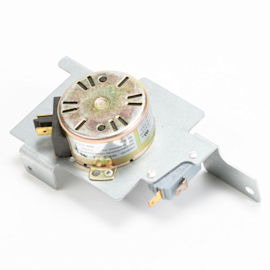Troubleshooting an F10 error code on a range video


If you see F10 on your range, it means that your electronic control board has detected a runaway temperature. It's possible that your range is not heating to the temperature that you set it to, or that the control board may be reading the temperature incorrectly. You may need to replace the electronic control board or the temperature sensor. This video from Sears PartsDirect shows you what to do if your range is displaying the error code F10.
For tips on other DIY repair projects, check out our repair help page covering all types of home appliances and lawn equipment.
Tools and parts needed
Multimeter
Hand tools
Work gloves
Causes of the F10 error code
Hi, this is Wayne with Sears PartsDirect. Today we’re going to talk about a range error code F10. F10 is a common error code for several manufacturers that appears when your oven exceeds the temperature you set it at in either the cook cycle or the clean cycle.
There are a few things that can cause the error code. If the range is actually overheating, then you could have a stuck relay on the control board, which means that you'll have to replace the control board to fix the problem.
A defective temperature sensor can also cause this problem. The oven control board may think that the oven is hotter than it actually is, which is why you may see this code when the oven is off and at room temperature.
Most codes will clear when you disconnect the power to the range for 1 to 2 minutes. Now that we’ve cleared the code let’s talk about how to keep it from popping up again. Before we fix it, we need to figure out what caused it. To figure out what’s wrong we’ll use a multimeter to check resistance.
Check the temperature sensor
Let's check the oven temperature sensor first.
Disconnect the power to the oven. Always disconnect power before checking continuity. Remove the back panel. Disconnect the wire harness from the sensor. Set your multimeter to read ohms and put one meter lead on each wire terminal of the temperature sensor.
The resistance reading on the sensor should be close to 1,100 ohms at a room temperature of 75 degrees. If the meter shows a resistance of less than 1,000 ohms or more than 1300 ohms at room temperature, the sensor will have to be replaced.
If the sensor checks no continuity, an OL reading on this meter, it should also be replaced. Here's a video that will walk you through that process on a gas range and on an electric range.
Test the sensor wire harness
If the temperature sensor checks okay, remove the top, back panel then plug the harness back in to the sensor and unplug the other end from the control board. We’re going to check resistance though the sensor and the wire harness next.
You should read close to the same resistance through the harness and sensor that you read though just the sensor.
Replace the control board
If the readings are the same and you continue to get the F10 error code when trying to cook, then the electronic control board will need to be replaced. Click here to learn how to replace the electronic control board on a gas range, or here for an electric range.
Hey, thanks for watching. Be sure to check out the other videos, here on the YouTube channel, and don't forget to subscribe.
Most common symptoms to help you fix your ranges
Choose a symptom to see related range repairs.
Main causes: broken oven door lock assembly, wiring failure, electronic control board problem…
Main causes: faulty temperature sensor, electronic control board problem, control thermostat failure, weak burner ignite…
Main causes: power supply problem, control thermostat or electronic control board failure, broken element, bad burner ig…
Main causes: food splatters, spilling food on the oven door, allowing liquid to drip through oven door vent when cleanin…
Main causes: broken broiler element, weak or broken broil burner igniter, control system failure, faulty temperature sen…
Main causes: bad bake element, broken burner igniter, control system failure, blown thermal fuse, faulty temperature sen…
Main causes: power supply failure, blown thermal fuse, bad relay control board, damaged terminal block, wiring failure…
Most common repair guides to help fix your ranges
These step-by-step repair guides will help you safely fix what’s broken on your range.

How to replace a range oven door switch
The oven door switch detects whether the oven door is closed and helps control the oven light. Replace the switch if it …

How to replace a range oven door lock assembly
Oven door not locking? You can replace the lock assembly in less than 30 minutes. Here's how.…
Effective articles & videos to help repair your ranges
Use the advice and tips in these articles and videos to get the most out of your range.

Learn how to clean and maintain your stove to keep it in top shape.…

Learn about all the convenient features on our Sears PartsDirect website that make your parts purchases easier.…

Get answers to frequently asked questions about Sears and Sears PartsDirect.…
